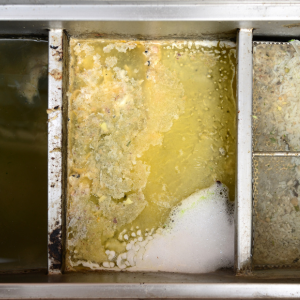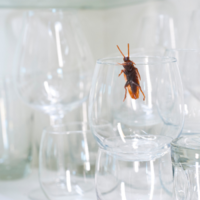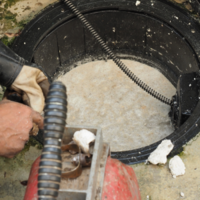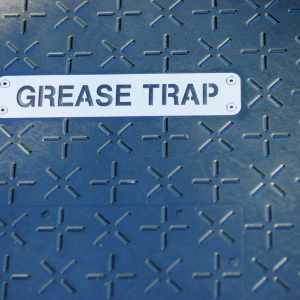The Hidden Dangers of Neglecting Your Commercial Grease Trap
Are you aware of the hidden dangers lurking within your commercial kitchen? Neglecting your grease trap may seem like a minor issue, but it can have catastrophic consequences for your business and the environment. Grease traps are designed to capture and contain fats, oils, and grease (FOG) before they enter the municipal sewer system. However, when these traps are neglected, they become a breeding ground for bacteria, clogs, and even foul odours. Not only can this pose a significant health risk to your employees and customers, but it can also result in costly repairs and fines from regulatory authorities.
Importance of Regular Maintenance for Grease Traps
Regular maintenance is crucial when it comes to grease traps. These devices are designed to intercept and separate FOG (Fat, Oil, Grease) from wastewater, preventing it from clogging the municipal sewer system. However, over time, the accumulated FOG can solidify and create blockages that hinder the proper functioning of the trap. This can lead to backups, slow drainage, and even flooding in your kitchen, causing significant disruptions to your operations.
By implementing a regular maintenance schedule, you can prevent these issues from occurring. Regular cleaning and pumping of your grease trap will ensure that it continues to operate efficiently, reducing the risk of blockages and backups. It's also important to note that neglecting your grease trap can void your warranty, leaving you responsible for any repairs or replacements that may be necessary.
Additionally, regular maintenance can extend the lifespan of your grease trap, saving you money in the long run. By preventing the buildup of FOG, you can reduce the wear and tear on the internal components of the trap, minimizing the need for costly repairs or replacements.
Consequences of Neglecting a Grease Trap
The consequences of neglecting your commercial grease trap can be severe and far-reaching. One of the most immediate risks is the potential for health and safety hazards within your kitchen. When a grease trap is neglected, it becomes a breeding ground for bacteria, which can contaminate your food preparation surfaces and increase the risk of foodborne illnesses. Foul odours can also permeate your kitchen, creating an unpleasant environment for your employees and customers.
Furthermore, neglected grease traps can lead to clogs in your plumbing system. As FOG accumulates, it can solidify and create blockages, causing backups and slow drainage. This not only disrupts your operations but can also lead to costly repairs and potential damage to your infrastructure. In extreme cases, a neglected grease trap can even cause sewer overflows, resulting in fines from regulatory authorities and damage to the environment.
Health and Safety Risks Associated with Neglected Grease Traps
Neglected grease traps pose significant health and safety risks within your commercial kitchen. The accumulation of FOG provides an ideal breeding ground for bacteria, including harmful pathogens such as E. coli and Salmonella. These bacteria can contaminate your food preparation surfaces, utensils, and even the food itself, increasing the risk of foodborne illnesses among your employees and customers.
In addition to bacteria, neglected grease traps can also attract pests such as cockroaches and rats. These pests are attracted to the food particles and organic matter present in the trap, and once they gain access to your kitchen, they can contaminate your food and spread diseases. Not only does this pose a health risk, but it can also damage your reputation and lead to a loss of customers.
Furthermore, breathing in these odours for extended periods can lead to respiratory issues, headaches, and nausea. This can result in decreased productivity and increased employee turnover.
Environmental Impact of Neglected Grease Traps
Neglected grease traps can have a detrimental impact on the environment. When FOG enters the sewer system, it can solidify and accumulate in the pipes, leading to blockages and sewer overflows. These overflows release untreated wastewater into the environment, contaminating water sources and harming aquatic life.
Additionally, the accumulation of FOG in the sewer system requires increased energy and resources for maintenance and repairs. Councils often spend significant amounts of money on cleaning and unclogging sewer lines due to grease trap neglect. By properly maintaining your grease trap, you can contribute to a more sustainable and environmentally-friendly operation.
Legal Implications of Neglecting a Grease Trap
Neglecting your commercial grease trap can have legal implications that can further impact your business. Many jurisdictions have regulations in place that require businesses to properly maintain their grease traps and prevent FOG from entering the sewer system. Failure to comply with these regulations can result in fines, penalties, and even the closure of your establishment.
It's important to familiarize yourself with the specific regulations in your area and ensure that you are in compliance. Regular maintenance and cleaning of your grease trap will not only keep your business running smoothly but will also help you avoid legal issues that can have a significant negative impact on your reputation and bottom line.
Signs of a Neglected Grease Trap
Recognizing the signs of a neglected grease trap is crucial for taking action before the situation worsens. Some common signs include slow drainage, foul odours, and backups in your kitchen sinks and drains. If you notice an increase in pests such as cockroaches or rats, this could also indicate a neglected grease trap.
Another sign to watch out for is the presence of grease in your wastewater. If you notice a greasy film or sheen on the surface of your wastewater or in your floor drains, it's likely that your grease trap is not functioning properly and requires immediate attention.
How to Properly Maintain a Commercial Grease Trap
Proper maintenance of a commercial grease trap involves regular cleaning and pumping to remove accumulated FOG. The frequency of cleaning depends on the size of your trap and the volume of FOG generated by your kitchen. It's recommended to consult with a professional grease trap service provider to determine the appropriate cleaning schedule for your specific needs.
In addition to regular cleaning, it's important to implement best practices in your kitchen to minimize the amount of FOG entering your trap. This includes scraping food scraps into the trash before washing dishes, using strainers in sinks and floor drains to catch solid particles, and avoiding the use of hot water to wash FOG down the drain, as it can cause the FOG to solidify and accumulate in the trap.
Regular use of an enzyme based degreaser cleaner such as Green'R Enzyme Industrial Cleaner, Grease Guard or Bio-Zyme Industrial will significantly reduce the need to have your grease trap pumped out, they will reduce odours and prolong the lifetime of your grease trap. You can manually pour the enzyme degreaser into your grease trap or set up an automatic dosing system. For advise on this please get in touch. Phone 0508 467 462 or email sales@insinc.co.nz
The Importance of Proactive Grease Trap Maintenance
Neglecting your commercial grease trap can have severe consequences for your business, your employees, and the environment. Regular maintenance and cleaning of your grease trap is essential to prevent health and safety risks, environmental damage, and legal issues. By implementing a proactive maintenance schedule and enlisting the help of professional grease trap cleaning services, you can protect your business, ensure the smooth operation of your kitchen, and contribute to a more sustainable future. Don't wait for disaster to strike – take action now to safeguard your business and the environment.
Posted: Sunday 24 September 2023


